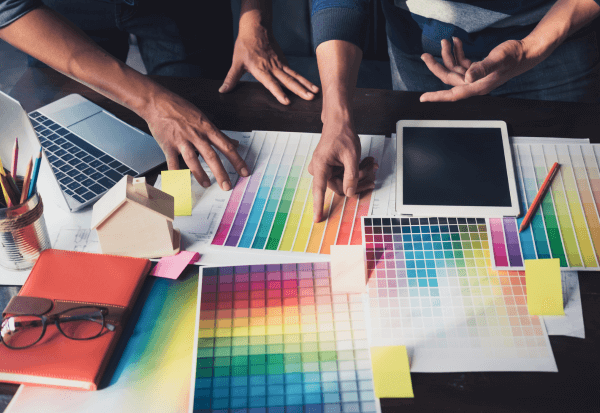Choosing a technology should be driven by the experience a product or service aims to provide its users – form should follow function, in other words. While we may have heard this before, we’ve still seen technology often taking the lead and influencing decisions related to user experience. While choosing the technology is important, understanding of the existing processes users follow to accomplish their tasks can provide a broader perspective. Empathise with the user, their values, what works well and what doesn’t.
Answers to many such questions lie in understanding the real problem a design or technology is meant to solve. A clear understanding of the current user experience can provide the right insights, which are crucial to solving the problem. This might involve streamlining processes, reducing friction, or introducing features that directly address user needs. In the process, we may discover that one technology is more effective than another, simpler to develop, or easier for users to understand and engage with. The goal is clear; design an experience that works for the user and choose a technology to enable it.
In summary, selecting technology should be a user-centred process. By prioritising user experience, identifying valuable aspects of current methods, and emphasizing user benefits, you can create solutions that are both effective and appealing to your target audience. This approach fosters innovation and ensures that the technology aligns with the needs and preferences of the users you aim to serve.
To prioritize user experience (UX) over technology selection, it’s essential to adopt a user-centred design approach that focuses on understanding users’ needs, behaviours, and pain points before making any technical decisions.
1. User research is the foundation
- Gain insight into users: Conduct interviews, surveys, and observational studies to ascertain how users currently perform tasks, the obstacles they encounter, and their expectations. This helps in comprehending their experiences, routines, and objectives.
- Create a strong reference: Create an image of the user that represents significant qualities and characteristics of your target audience. This approach ensures that each design decision aligns with the genuine needs of users, rather than being based on theoretical technological possibilities.
2. User journeys hold the key
- Identify challenges: Create a map to illustrate steps users take to complete a task and highlight friction points. Identifying these points helps build a deeper connection with the user.
- User flow to gather insights: Ensure that every action in the user journey is clear, seamless, and enhances the user experience. This understanding will help in easing technological choices in subsequent stages.
3. Design user flow and experience
- Sketch ideas early: Start with wireframes, low-fidelity prototypes, or mock-ups that describe the user journey without committing to a particular technology.
- Real users can provide insights: Gather feedback on the prototypes and refine the design to ensure it addresses the user’s needs.
4. Technology, the powerhouse that brings experience to life
- Let UX define requirements: UX can delve deeper into requirements while creating a prototype. Only after finalising the user experience should we begin considering technology. The role of technology should be to bring the design to life.
- Evaluate technology with respect to UX goals: Assess how well a technology meets your specified user flows, usability, and performance criteria. Choose technology carefully to ensure it satisfies real user requirements.
5. Iterate and adapt for longevity
- Let user be the central focus: Launch your product, but continuously gather user feedback and iterate to enhance the experience. As user needs evolve, the technology should be flexible enough to adapt to those changes.
6. Collaboration is innovation
- Bridge UX and tech teams: Close collaboration between UX designers and developers from the start is essential. Designers solve problems for the user, while developers solve challenges of transforming the design into a real product or service.
In the ever-evolving digital landscape, prioritizing user experience over technology is key to creating effective, user-centered solutions. By understanding user needs, refining designs based on feedback, and fostering close collaboration between UX designers and developers, technology can enable seamless experiences. This approach ensures that products and services address specific user needs while remaining adaptive to their evolving needs, which leads to innovations that are both impactful and sustainable.

is passionate about designing seamless, impactful digital experiences. As a UX design strategist and consultant, he believes that design thinking can transform problems into design opportunities that simplify and enhance people’s lives. Over the years, he has led design teams through the full design lifecycle, delivering engaging user experiences across a range of industries, platforms, and enterprises. He currently heads the UX Design practice of Product & Digital Engineering Services at Happiest Minds.






